Abstract
An analysis of observations made during 1,307 diagnoses by a total of 28 clinicians (503 diagnoses in real life, and 804 on simulated patients) concerned primarily the interview of patients suffering from abdominal pain. Interviews ranged from 10 to 35 questions, and from “stereotyped” procedures, in which identical (and often irrelevant) questions were asked to each patient, to “adaptive” interviews, in which specific relevant questions were put to each patient. Senior clinicians tended to ask fewer, more relevant questions than their junior counterparts; and urgent cases were dealt with in a more adaptive fashion than routine cases in outpatients. Disappointingly, there was considerable difference between real-life and simulated situations. From these results it is suggested (a) that the “diagnostic process” does not exist, (b) that any automated diagnostic system must be flexible to accommodate the wishes of a variety of clinicians, and (c) that studies based on artificial clinical situations should be treated with extreme caution.
Full text
PDF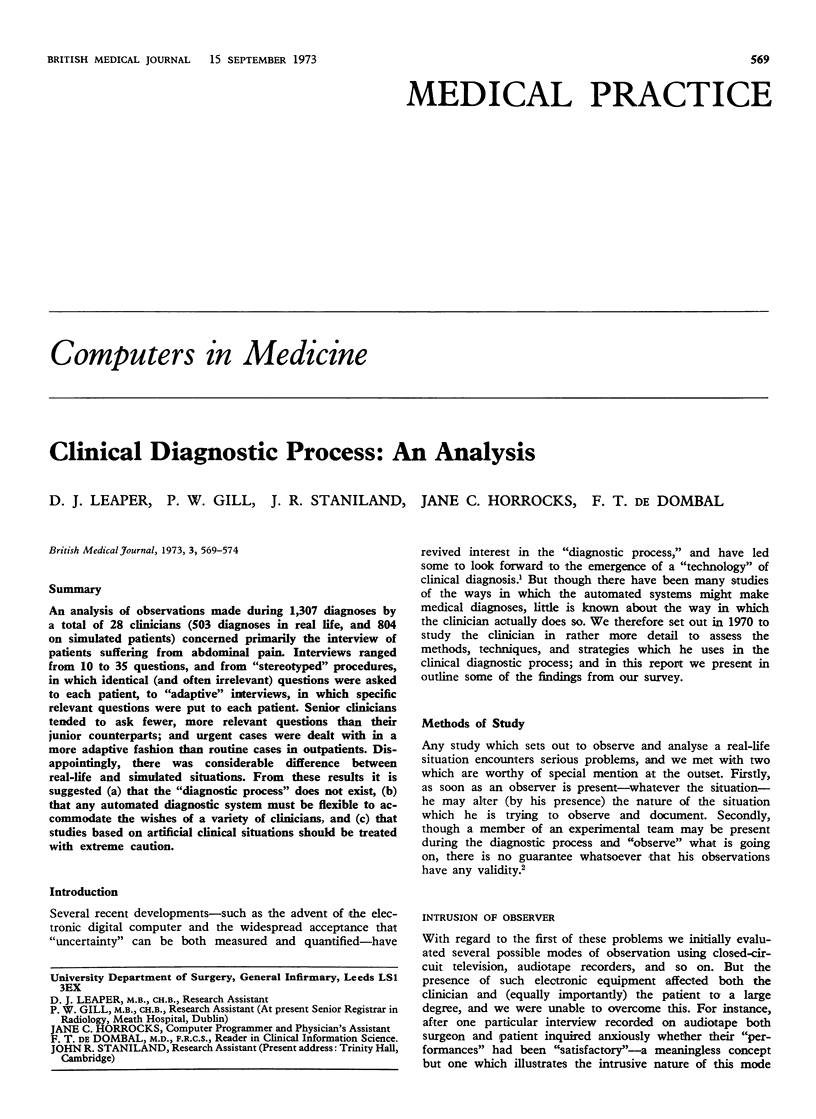
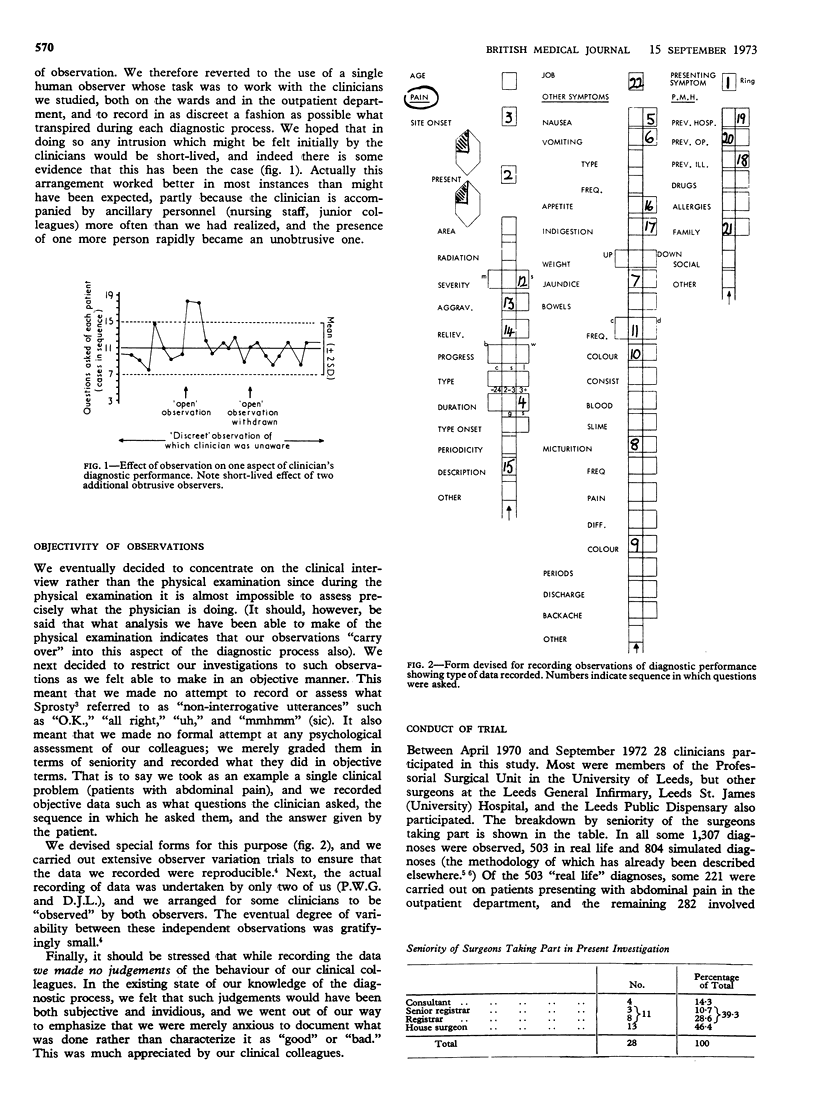
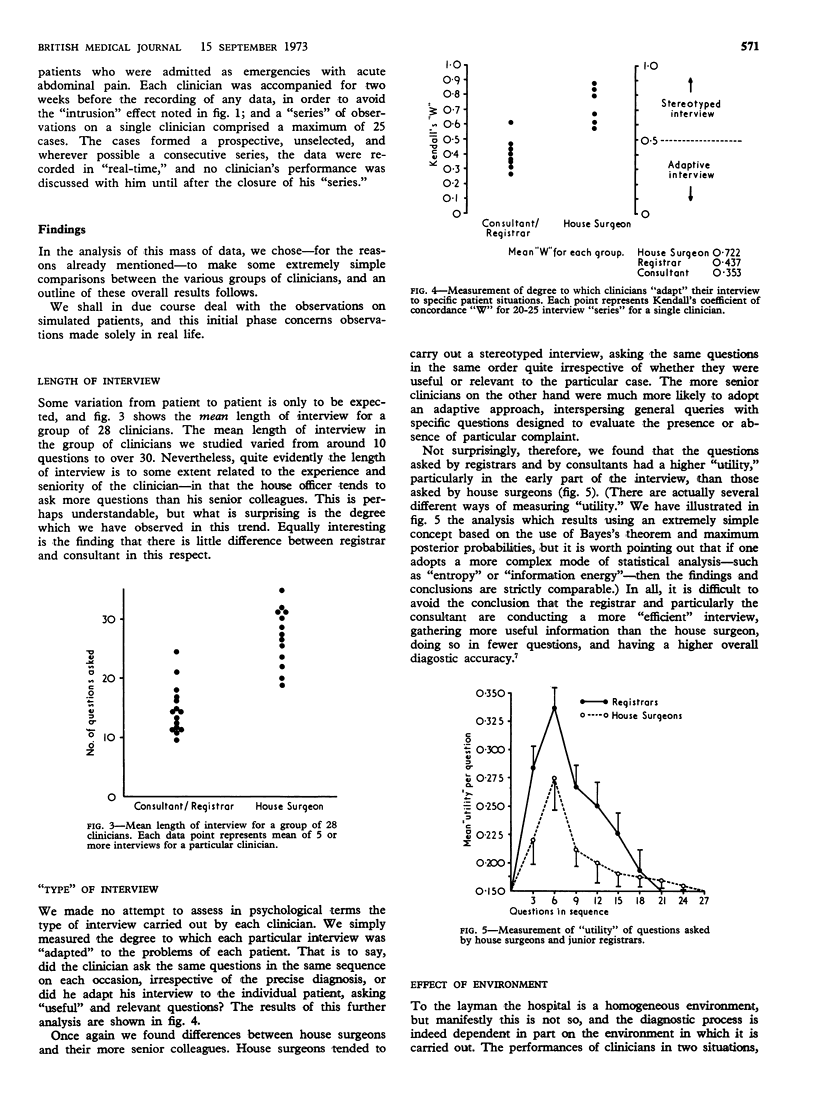
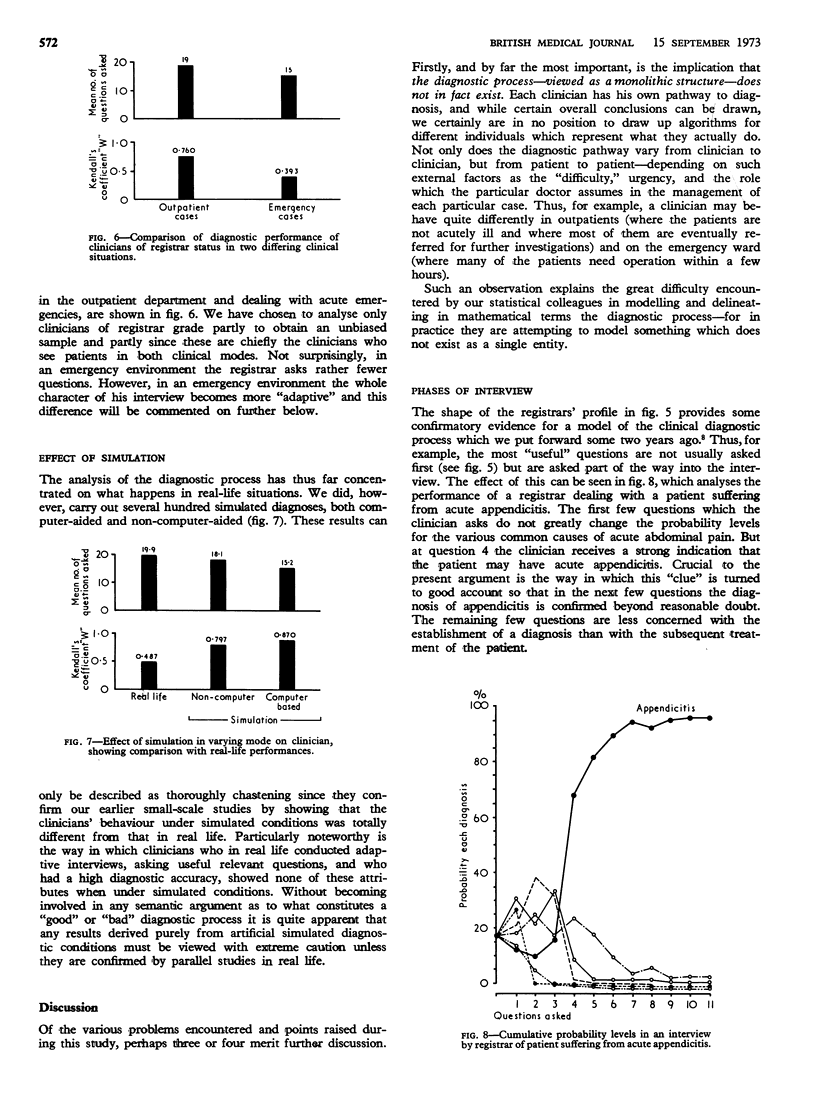

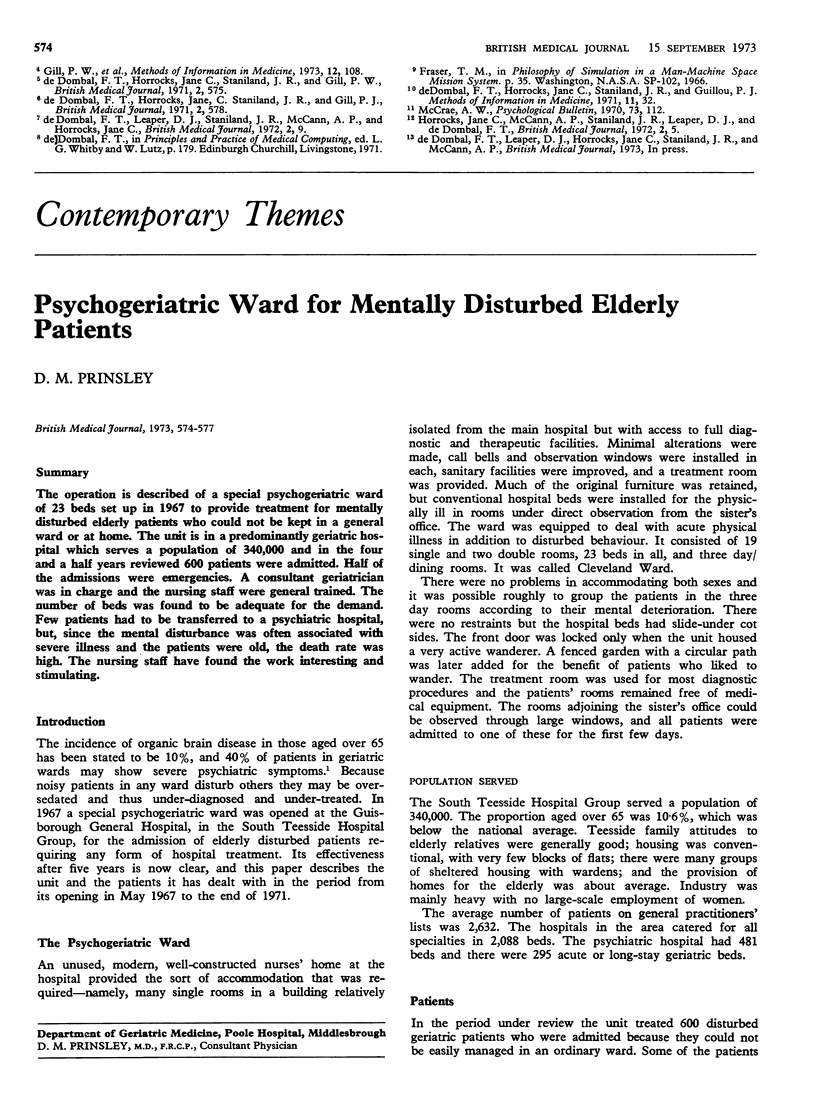
Selected References
These references are in PubMed. This may not be the complete list of references from this article.
- De Dombal F. T., Horrocks J. C., Staniland J. R., Gill P. W. Simulation of clinical diagnosis: a comparative study. Br Med J. 1971 Jun 5;2(5761):575–577. doi: 10.1136/bmj.2.5761.575. [DOI] [PMC free article] [PubMed] [Google Scholar]
- De Dombal F. T., Horrocks J. C., Staniland J. R., Guillou P. J. Production of artificial "case histories" by using a small computer. Br Med J. 1971 Jun 5;2(5761):578–581. doi: 10.1136/bmj.2.5761.578. [DOI] [PMC free article] [PubMed] [Google Scholar]
- Gill P. W., Leaper D. J., Guillou P. J., Staniland J. R., Horrocks J. C., de Dombal F. T. Observer variation in clinical diagnosis--a computer-aided assessment of its magnitude and importance in 552 patients with abdominal pain. Methods Inf Med. 1973 Apr;12(2):108–113. [PubMed] [Google Scholar]


